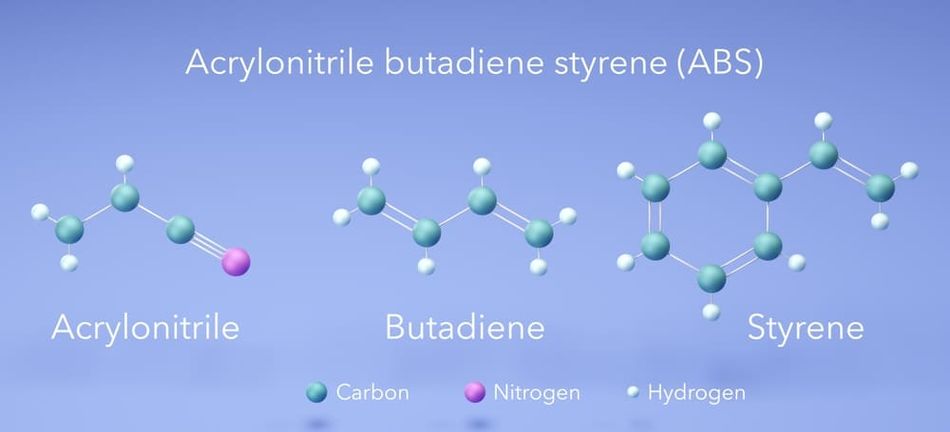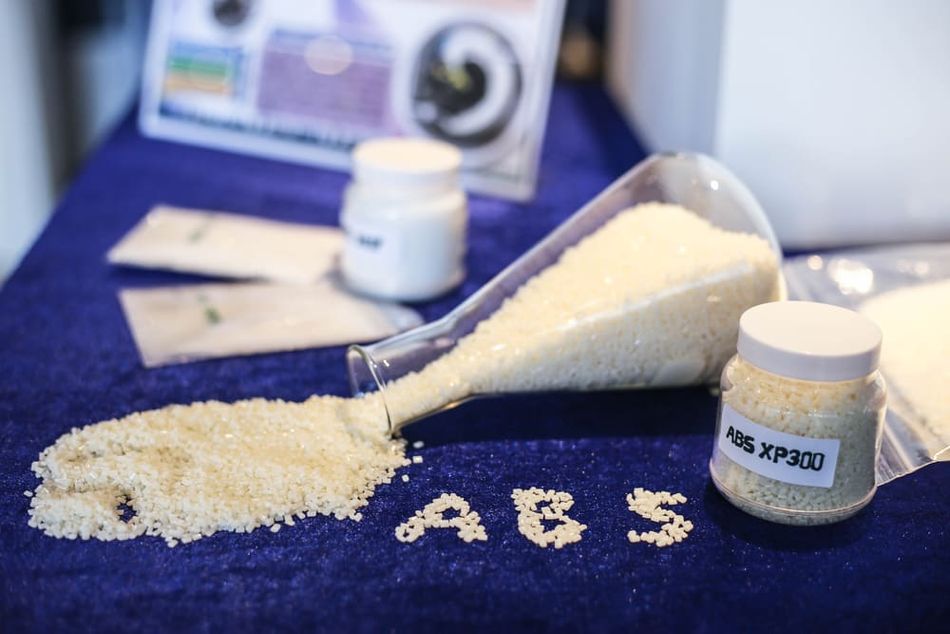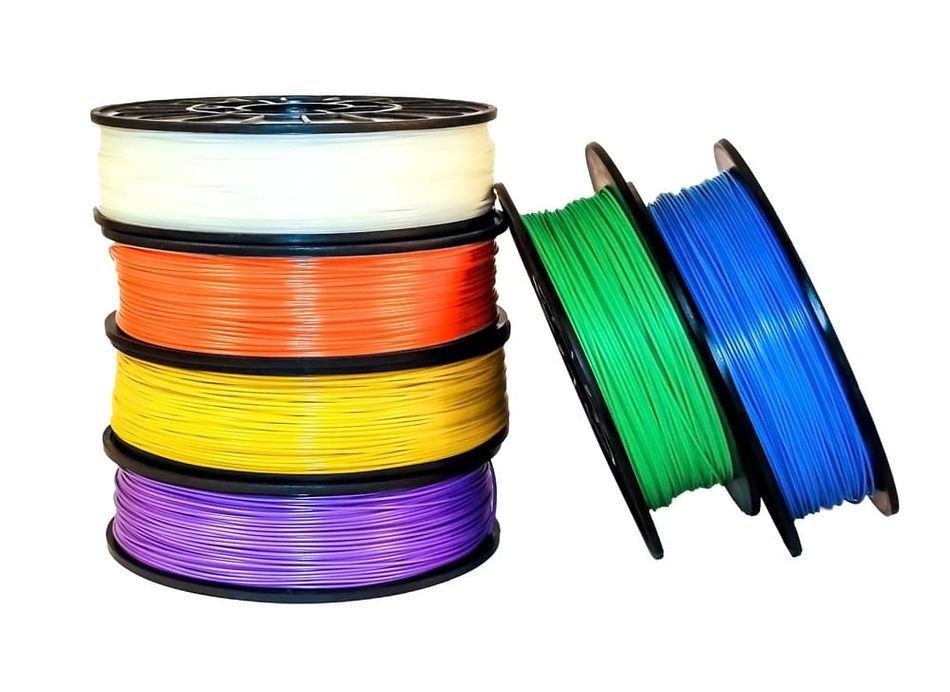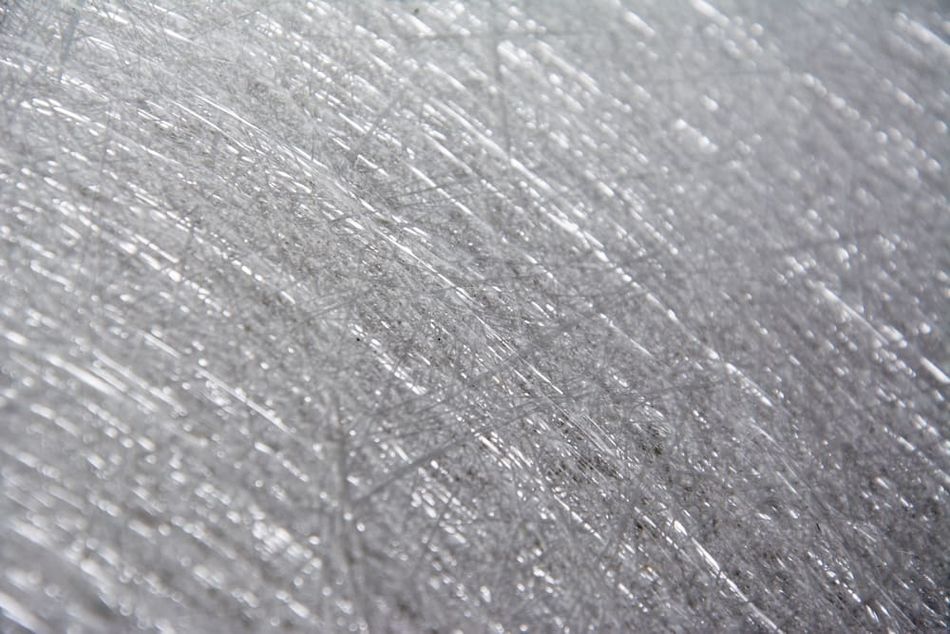ABS Heat Resistance and Other Material Properties
ABS is a widely used 3D printing filament with good impact resistance and flexural strength. It also exhibits moderate heat resistance, making it a go-to material for mid-temperature 3D printing applications.

ABS can endure moderate temperatures before it melts
ABS (Acrylonitrile Butadiene Styrene) is a widely used thermoplastic material known for its versatility and durability. It is found in application areas like consumer goods, automotive, and electronic devices, with manufacturers typically using technologies like injection molding, CNC machining, thermoforming, and 3D printing to process it.
One key aspect of ABS that makes it suitable for a diverse range of applications is its moderate heat resistance. Though by no means a highly heat-resistant material (especially compared to engineering-grade thermoplastics like PEEK), ABS products can maintain their integrity and performance when exposed to moderately elevated temperatures, which is crucial in industries such as automotive and electronics where components may be regularly subjected to residual heat from engines or batteries.
In the world of FDM 3D printing, ABS is one of the most widely used 3D printing materials alongside PLA and PETG. ABS’ superior heat resistance to PLA is one of the material’s major advantages, although it means it must be extruded at higher temperatures.
In this article, we’ll be looking closer at ABS as a 3D printing material, what factors determine ABS’ heat resistance, as well as the material’s other properties.
ABS’ Chemical Makeup
ABS is a copolymer composed of three distinct monomers: Acrylonitrile, Butadiene, and Styrene. Each of these monomers contributes specific characteristics to the final ABS material, and their relative proportions determine its overall properties.

Acrylonitrile is a colorless volatile liquid that lends chemical resistance and rigidity to ABS. It has a high affinity for polar solvents, which contributes to the material's resistance to chemicals such as acids, alkalis, and various organic solvents. Perhaps most importantly, acrylonitrile is also the monomer that contributes most to the heat resistance of ABS. Typically, acrylonitrile makes up 15–35% of ABS by weight.
Butadiene is a gas (condensable into a liquid) that provides toughness and impact resistance to the copolymer. It is a flexible and resilient material, which contributes to the overall durability of ABS. The proportion of butadiene in ABS ranges between 5–30% by weight.
Styrene is an oily liquid that is responsible for the ease of processing and good surface finish in ABS. It also contributes to the material's overall strength and dimensional stability. Styrene typically constitutes 40–60% of the ABS composition.[1]
The polymerization process of ABS involves the formation of a copolymer through the reaction of these three monomers. The process begins with the polymerization of styrene and acrylonitrile, forming a styrene-acrylonitrile (SAN) copolymer. Subsequently, butadiene is grafted onto the SAN copolymer backbone, resulting in the formation of the ABS copolymer. The precise balance of these components dictates the physical and mechanical properties of the final ABS material, allowing manufacturers to fine-tune the material for specific applications.
Material Properties of ABS

In this section, we’ll be looking at ABS’ many material properties, including its physical properties, thermal properties, and chemical properties.
ABS Physical Properties
ABS’ material properties make it suitable for a wide range of applications. With a natural color varying between translucent ivory and opaque white, ABS has a typical density ranging between 1.0–1.05 g/cm³, making it a lightweight option compared to other plastics.[5] The glass transition temperature of ABS is around 105 °C, allowing it to be processed using techniques such as injection molding, extrusion, and FDM 3D printing.
In terms of mechanical properties, ABS offers a good balance of strength, toughness, and rigidity. Its tensile strength is around 40-50 MPa, though this varies depending on the specific formulation and processing conditions.[5] This strength allows ABS to withstand moderate loads without breaking or deforming.
Impact resistance is another key characteristic of ABS, thanks to the presence of butadiene in its composition. This property is particularly crucial in applications where the material is subjected to sudden impacts or stress, such as automotive components or consumer electronics enclosures. The notched impact strength of ABS is around 10 - 20 kJ/m², but this also depends on factors such as temperature, material formulation, and processing conditions.
In 3D printing, one of the most desirable physical properties of ABS is its score on the melt flow index (MFI), a method for “determining the rate of flow of molten polymer through a closely defined extrusion plastometer.”[2] Better melt flow facilitates better extrusion and easier 3D printing, especially at fast printing speeds.
The combination of these physical and mechanical properties makes ABS a popular choice for a wide range of applications, from consumer goods to industrial components. Its versatility, ease of processing, and relatively low cost contribute to its widespread use across different industries.
ABS Thermal Properties
ABS Glass Transition Temperature (Tg) | 105 °C |
ABS Optimal Usage Temperature Range | -20 - 80 °C |
ABS Heat Deflection Temperature (HDT) | 80–100 °C |
ABS Vicat Softening Temperature | 100 °C |
ABS Melting Point | N/A |
The glass transition temperature (Tg) of ABS is approximately 105 °C. This is the temperature at which ABS transitions from a rigid, glassy state to a rubbery, softer state. Below this temperature, ABS remains fairly stiff; above it, it significantly loses stiffness and can deform under load. In practical terms, most ABS parts are serviceable in temperatures up to around 80 °C in continuous use. Beyond this temperature, ABS’ mechanical properties start to diminish noticeably, and it will creep or warp under stress. For most applications, -20 °C to 80 °C is cited as the useful temperature range of ABS.[6]
Two key metrics that engineers use to quantify a plastic’s heat resistance are Heat Deflection Temperature (HDT) and Vicat Softening Temperature:
Heat Deflection Temperature (HDT) is the temperature at which a standard test specimen of the plastic deforms by a given amount under a specified load. ABS typically has an HDT in the range of 80–100 °C under standard loads. This indicates the temperature where ABS will start to bend under moderate stress. By comparison, some other polymers have higher HDTs. It’s important to note HDT is a single-point measure: it tells when a sample deflects a certain amount, but it doesn’t capture long-term exposure effects or safety margins in real products.
Vicat Softening Temperature is another measure, indicating when a polymer softens enough that a needle-like indenter can penetrate a certain depth under load. ABS’ Vicat softening is around 100 °C (similar to its HDT range). Essentially, by the time ABS approaches 100 °C, it is quite soft and not able to hold shape under pressure.
It’s also notable that ABS has no true melting point since it is amorphous. Instead, it will gradually soften and then eventually liquefy around 200 °C or higher.
Other thermal properties include a relatively low thermal conductivity (~0.14–0.21 W/m·K), meaning ABS is a thermal insulator (which can be a double-edged sword: it won’t conduct heat away, potentially trapping heat in an enclosure).[7] ABS also has a moderate coefficient of thermal expansion (CTE) on the order of 70–100×10^-6 per °C. This CTE means ABS parts expand noticeably when heated. Designers must accommodate expansion in assemblies; otherwise, heated ABS components might stress and warp as they expand against constraints.
ABS Chemical Properties
ABS exhibits several key chemical properties due to the influence of its monomers. Acrylonitrile imparts chemical resistance to oils, fats, and many acids and bases, making ABS durable in various environments. ABS is also resistant to many common chemicals but can degrade when exposed to strong oxidizing agents, and it is vulnerable to solvents like ketones, esters, and aromatic hydrocarbons.
ABS also has low moisture absorption, helping it maintain its mechanical properties in humid conditions. However, it can undergo surface degradation when exposed to ultraviolet (UV) light over time unless UV stabilizers are incorporated (ASA, for example, exhibits similar mechanical properties to ABS but with UV resistance). ABS maintains its form and strength even under mechanical stress and environmental exposure. It’s also resistant to weathering, but prolonged exposure to UV radiation can cause discoloration or embrittlement unless treated with additives to enhance its UV stability.
ABS Heat Resistance and FDM 3D Printing

When considering the heat resistance of 3D printed ABS rather than ABS generally, other factors need to be considered. Any printed thermoplastic will behave in a different manner to a molded or formed thermoplastic, and the ABS filament is processed in a different way to ABS granules and other material forms.
In non-industrial FDM 3D printing, ABS is considered a fairly heat-resistant material due to its superior heat resistance to PLA filament and PETG filament, two other prominent 3D printer materials that can be bought at low prices. It may therefore be preferred for functional parts like electronics housings.
On the other hand, the higher glass transition temperature of ABS means it requires higher temperatures to extrude. This puts greater demands on the 3D printer while also making it necessary to use a heated print bed to minimize warping, which occurs to a greater extent with ABS printed parts than PLA or PETG parts.
For industrial applications, the best heat-resistant 3D printer filaments are high-quality engineering thermoplastics like PEEK, which have much better heat resistance than ABS in addition to high impact resistance and other desirable properties. However, due to their high melting temperature, these materials require specialist high-temperature hardware to print.
Recommended reading: ABS print temperature considerations: Nozzle, bed, enclosure
Enhancing ABS Heat Resistance in 3D Printing
One method to enhance ABS heat resistance is by combining it with other thermoplastics to create blends. These blends can significantly improve the overall heat resistance of the resulting material, while still retaining the desirable properties of ABS, such as impact resistance, processability, and surface finish. There aren’t many blended ABS 3D printing filaments on the market, the most common is an ABS-PC blend, which combines ABS with polycarbonate.
PC is a thermoplastic material known for its high heat resistance, excellent mechanical properties, and optical clarity. By blending ABS with PC, manufacturers can create a material with better heat resistance than standard ABS, making it suitable for applications requiring higher thermal stability. The resulting ABS-PC blend often exhibits improved tensile strength, rigidity, and flame retardancy. Researchers have noted an increased heat deflection temperature and Vicat softening temperature as the proportion of PC is increased within the blend.[2] In 3D printing, PC is one of the only materials that is commonly blended with ABS to make filament.
In addition to creating blends, another approach to enhancing ABS heat resistance is to incorporate heat-resistant additives into the base material. These additives can improve the thermal stability and performance of ABS without significantly altering its processability. In FDM 3D printing, an ABS filament containing a significant percentage of an additive is usually referred to as an ABS composite.

There are different types of fillers that can be added to an ABS matrix to improve material properties, such as thermal resistance. They include:
Inorganic Fillers: The incorporation of inorganic fillers such as glass fibers can lead to increased heat resistance in ABS. Glass fibers are particularly effective at improving both heat resistance and mechanical properties, as they create a more thermally stable network within the polymer matrix. The addition of glass fibers can increase the heat deflection temperature of ABS by up to 40°C, depending on the filler content. However, the presence of glass fibers may also increase the material's brittleness and decrease its impact strength. Talc and mica, on the other hand, are plate-like fillers that can improve the heat resistance of ABS by forming a barrier to heat transfer within the material.[3] The use of talc or mica fillers can increase the heat deflection temperature by up to 15°C, depending on the filler content and particle size.
Flame Retardants: Some flame retardants, such as brominated compounds and phosphorus-based additives, can also contribute to the heat resistance of ABS. These additives not only improve the material's flame resistance but also increase its thermal stability by reducing the rate of thermal degradation at elevated temperatures. As a result, ABS with flame retardants exhibits higher heat deflection temperatures and reduced distortion under load when exposed to high temperatures.
Heat Stabilizers: Heat stabilizers are additives that help prevent the thermal degradation of ABS by minimizing the effects of heat-induced oxidation and molecular chain scission. Commonly used heat stabilizers include organotin compounds, hindered phenolic antioxidants, and phosphite esters. The use of heat stabilizers can improve the long-term heat resistance of ABS, allowing it to maintain its mechanical properties and dimensional stability at elevated temperatures for extended periods.
Recommended reading: 5 Options to Get Heat-Resistant Parts in 3D Printing
3D Print Temperature Settings for ABS
When 3D printing with ABS, temperature settings play a critical role in achieving high-quality, strong, and durable prints. ABS requires specific temperature ranges for both the extruder (hotend) and the heated bed to ensure optimal adhesion and material flow. While we’ve covered this topic in a dedicated in-depth article, here is a summary of the ideal print temperature settings for ABS.
Extruder Temperature: The ideal extruder temperature for printing ABS typically ranges from 220°C to 250 °C. The exact temperature within this range depends on the specific brand or formulation of ABS you're using, as well as the printing speed. A higher extruder temperature (around 240°C to 250°C) helps improve layer bonding and flow, especially when printing larger or more complex parts. Lower temperatures (closer to 220°C) might be useful for finer detail but can cause poor adhesion between layers, leading to weak prints. It’s important to experiment with your specific filament to find the best temperature for your needs by using techniques like a temperature tower.
Heated Bed Temperature: ABS has a strong tendency to warp or lift off the print bed during printing due to its shrinkage as it cools. To combat this, a heated bed is crucial. The ideal bed temperature for ABS printing is 95°C to 110°C. This helps prevent warping by keeping the first few layers warm and adhering to the bed better. At the lower end of the range (90°C), prints may adhere well but could still warp, especially on larger prints. A bed temperature closer to 100-110°C is often recommended for larger or more intricate ABS prints, providing better adhesion and reducing the risk of warping.
Print Environment: ABS is also sensitive to environmental factors, such as drafts or temperature fluctuations. A heated enclosure or print chamber can therefore help maintain a stable printing environment, preventing rapid cooling and reducing warping during the print.
Cooling: In general, it's best to use minimal or no cooling for ABS prints. ABS is prone to warping and cracking if it cools too quickly, and cooling fans can exacerbate these issues. For most ABS prints, it's recommended to either turn off the cooling fan entirely or use it at a very low setting (around 20-30%).
ABS Heat Resistance in 3D Printing Applications
ABS’ balance of toughness, printability and cost make it extremely popular as a 3D printing material, particularly as a more robust alternative to PLA. Hobbyists and engineers often choose ABS filament when they need a printed part that might face higher temperatures. For example, a 3D printed ABS car phone mount or camera enclosure can survive a hot summer day in a vehicle, whereas a PLA version might sag into a gummy mess.
PLA begins to soften around 60 °C, far lower than ABS, which doesn’t soften until about 105°C. This difference is huge and unlocks the potential for functional prototypes and end-use parts. On the other hand, 3D printing ABS is trickier to print than PLA due to warping and higher extrusion temperatures required. To accommodate this, many desktop 3D printers use enclosures or heated chambers to keep the ABS print warm during fabrication, preventing it from cooling too fast and warping. Another popular 3D printing material, PETG, has intermediate heat resistance (~75 °C softening). ABS also beats PETG in terms of heat deflection, which is why ABS is preferred for, say, a part that might bolt to a motor that gets warm. In industrial additive manufacturing, if even higher temperature performance is needed, materials like polycarbonate, Ultem (PEI), or PEEK are used – but these can require specialized printers. For most electronics prototypes and enclosures, ABS is usually sufficient since typical operating temps stay under its threshold.
Recommended reading: ABS Print Speed Limits and Other Considerations
Conclusion
In conclusion, ABS is a versatile and durable material that excels in various 3D printing applications, including functional prototypes, automotive components, electrical housings, production aids, replacement parts, and more due to its combination of impact resistance, ease of processing, and moderate heat resistance. Although it requires higher extrusion temperatures and a heated bed to prevent warping, ABS is a more robust option compared to other popular 3D printing materials like PLA and PETG. Moreover, as we saw, its properties can be further enhanced with blends, such as ABS-PC, and fillers, like glass fibers, to improve heat resistance. Whether for consumer goods, automotive components, or electronics enclosures, ABS offers a reliable and cost-effective solution for many 3D printing needs, making it an ideal choice for both hobbyists and professionals.
Frequently Asked Questions (FAQs)
Q: What is the typical heat resistance of ABS?
A: The heat resistance of ABS can vary depending on factors such as its composition, processing conditions, and the presence of additives. Generally, the heat deflection temperature (HDT) of ABS ranges from 80 °C to 100 °C, while its Vicat Softening Temperature is around 100 °C.
Q: How does ABS compare to other 3D printing materials in terms of heat resistance?
A: ABS offers better heat resistance than PLA and PETG, which makes it a suitable choice for functional parts that need to withstand higher temperatures.
Q: What is the glass transition temperature (Tg) of ABS?
A: The glass transition temperature of ABS is around 105 °C, meaning it remains stiff below this temperature but softens and loses rigidity above it.
Q: What is the recommended extruder temperature for 3D printing with ABS?
A: The ideal extruder temperature for ABS is between 220°C and 250°C, depending on the specific filament and printing conditions.
Q: Why is a heated bed necessary when 3D printing with ABS?
A: A heated bed helps prevent warping by maintaining consistent temperature during printing, ensuring better adhesion to the bed, especially for larger or more intricate prints.
Q: How can ABS heat resistance be improved?
A: Improving ABS heat resistance can be achieved through blending ABS with other polymers, such as polycarbonate (PC). Additionally, incorporating heat-resistant additives such as glass fibers can enhance ABS heat resistance properties.
Q: How is ABS heat resistance tested?
A: ABS heat resistance is commonly tested using methods specified in industry standards, such as the heat deflection temperature (HDT) test in ISO 75-1 and ISO 75-2, and the Vicat Softening Temperature test in ISO 306. These tests help determine the temperature at which ABS materials begin to deform or soften under specified loads, allowing for comparison of different ABS grades and materials.
Q: Can you anneal ABS 3D prints?
A: You cannot anneal ABS 3D prints in the same way as other materials such as PLA. While annealing involves heating a 3D print to improve its strength or heat resistance, ABS has a tendency to warp or deform when exposed to high temperatures. Unlike other materials, ABS does not benefit significantly from annealing, in fact, heating ABS prints too much can cause them to lose their shape, leading to distortion.
References
[1] Acrylonitrile Butadiene Styrene (ABS) [Internet]. APC Packaging, 2021. https://techcenter.apcpackaging.com/lets-talk-abs
[2] Shenoy AV, Saini DR. Melt flow index: More than just a quality control rheological parameter. Part I. Advances in Polymer Technology. 1986 Mar;6(1):1-58.
[3] Krache R, Debbah I. Some mechanical and thermal properties of PC/ABS blends. Materials Sciences and Applications. 2011 May 5;2(5):404-10.
[4] Ananthapadmanabha GS, Deshpande V. Influence of aspect ratio of fillers on the properties of acrylonitrile butadiene styrene composites. Journal of Applied Polymer Science. 2018 Mar 15;135(11):46023.
[5] Acrylonitrile Butadiene Styrene (ABS) and Other Specialist Styrenics [Internet]. British Plastics Federation, 2025. https://www.bpf.co.uk/plastipedia/polymers/ABS_and_Other_Specialist_Styrenics.aspx
[6] Pye, Andy. The basics of Acrylonitrile Butadiene Styrene (ABS) [Internet]. UL Solutions, April 16, 2021. https://www.ulprospector.com/knowledge/11655/pe-the-basics-of-acrylonitrile-butadiene-styrene-abs/
[7] Thermal conductivity of Acrylonitrile Butadiene Styrene (ABS) [Internet]. Thermtest Instruments, November 21, 2022, https://thermtest.com/thermal-conductivity-of-acrylonitrile-butadiene-styrene-abs
Table of Contents
ABS’ Chemical MakeupMaterial Properties of ABSABS Physical PropertiesABS Thermal PropertiesABS Chemical PropertiesABS Heat Resistance and FDM 3D PrintingEnhancing ABS Heat Resistance in 3D Printing3D Print Temperature Settings for ABSABS Heat Resistance in 3D Printing ApplicationsConclusionFrequently Asked Questions (FAQs)